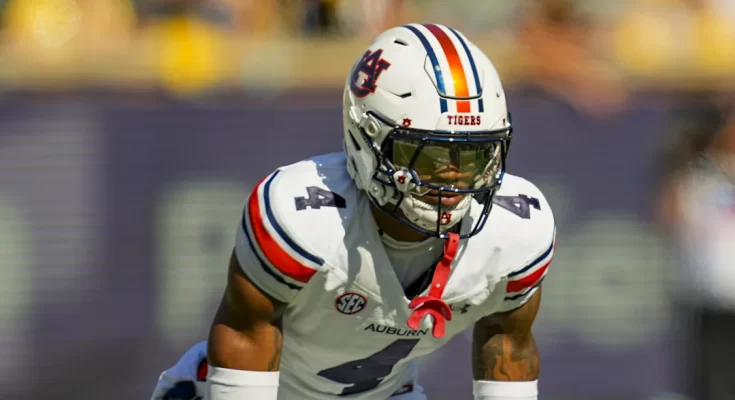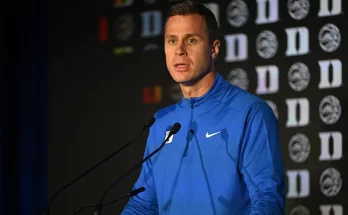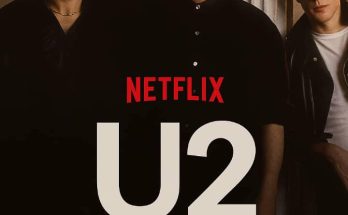One of the most overlooked but potentially decisive elements of the Auburn Tigers’ upcoming season is not the quarterback battle, not the high-profile coaching additions, and not even the loaded defensive line. It’s the offensive line—a unit that has quietly undergone significant transformation under head coach Hugh Freeze and could prove to be the most critical factor in Auburn’s resurgence. While fans and analysts often focus on skill position players or defensive stars, the reality is that the offensive line will dictate just how far Auburn can go in 2025.
For the last several seasons, Auburn’s offensive line has been a glaring weakness. A combination of inconsistent recruiting, coaching turnover, and injuries have led to a patchwork unit that struggled against elite SEC competition. In key games, particularly against Alabama, Georgia, and LSU, Auburn’s inability to protect the quarterback or establish a consistent ground game has spelled disaster. It has contributed directly to losing seasons, undermined quarterback development, and stalled offensive momentum when it mattered most.
When Hugh Freeze took the job in 2022, he identified the offensive line as one of the program’s biggest liabilities. Unlike the flashy skill positions that draw attention and headlines, Freeze and his staff made a deliberate effort to rebuild the foundation, starting in the trenches. That process, though under-discussed by the national media, may finally be bearing fruit.
Freeze and offensive line coach Jake Thornton began their overhaul through the transfer portal and aggressive high school recruiting. They focused on adding size, athleticism, and versatility. In 2023 and 2024, Auburn brought in several experienced linemen from other programs—players who had already been tested at the collegiate level. At the same time, they managed to land blue-chip high school recruits who could develop into SEC-caliber starters within a season or two. The results weren’t immediately visible on the scoreboard, but anyone watching closely saw the seeds being planted.
Fast-forward to 2025, and Auburn now has a unit that boasts experience, depth, and cohesion—three elements that have been missing in recent years. Players like Dillon Wade and Avery Jones, who transferred into the program early in the rebuild, are now veterans with SEC reps under their belts. They’ve not only developed physically but have become vocal leaders in the locker room. Meanwhile, younger talents like high-upside guard DeAndre Carter and athletic tackle Tyler Johnson have emerged from developmental projects into serious contributors.
What makes this group even more intriguing is its versatility. Several players can slide between guard and tackle positions, allowing the coaching staff to adjust to injuries or matchups without drastically compromising the quality of play. This kind of flexibility is invaluable over the course of a grueling SEC season, where attrition is inevitable. The ability to plug-and-play without losing rhythm or protection is something Auburn hasn’t had in years.
The improvement in the offensive line will also have a ripple effect on the rest of the offense. Auburn’s quarterback situation has been under scrutiny, with returning players like Payton Thorne competing against talented underclassmen and new recruits. Regardless of who wins the starting job, their success will largely depend on how well the line protects them. Quarterbacks need time to read defenses, go through their progressions, and deliver accurate passes. Without protection, no offensive scheme—no matter how clever—can succeed.
Then there’s the ground game. Auburn has always prided itself on having a strong rushing attack, from the days of Bo Jackson to Cadillac Williams to Kerryon Johnson. But in recent seasons, the running backs have often been forced to make plays in the backfield due to breakdowns at the line of scrimmage. With an improved offensive line, players like Jarquez Hunter and Jeremiah Cobb will finally have the space they need to get to the second level and exploit defenses. This could mark a return to Auburn’s smashmouth identity—something fans have sorely missed.
Moreover, a strong offensive line opens up the playbook. Hugh Freeze’s offensive system is predicated on tempo, balance, and misdirection. But those things only work if the offensive line can hold its own. A good line gives Freeze the confidence to call more aggressive plays, including deep shots and complex run-pass option looks. It keeps defenses on their heels and maximizes the talent Auburn has at skill positions.
It’s also worth noting the psychological impact of a dominant offensive line. There’s a swagger that comes with controlling the line of scrimmage. It changes the tone of games, especially in the SEC where battles are often won in the trenches. If Auburn can start bullying teams up front—pushing around defensive lines and imposing their will—it will send a message not just to opponents, but to Auburn’s own locker room. It’s a confidence builder, a morale booster, and a culture-setter.
Another slept-on aspect is how a better offensive line can help the defense. Football is a complementary game. When the offense can sustain drives, it keeps the defense fresh and off the field. Auburn’s defense, particularly its front seven, has the talent to be elite. But they’ve often been put in bad positions due to quick three-and-outs or turnovers caused by pressure on the quarterback. With better protection and drive consistency, Auburn’s defense will have more time to rest, regroup, and dominate.
The schedule will test this unit early and often. Matchups against Georgia, LSU, Texas A\&M, and Alabama will expose any weaknesses in technique or cohesion. But that’s also where the greatest opportunities lie. If the offensive line can hold its own in those high-stakes environments, Auburn becomes a much more dangerous team. The Tigers have been on the fringe of relevance for a few seasons now. Bridging that gap from “competitive” to “contender” hinges on doing the little things right—and the offensive line is at the center of it all.
Of course, development isn’t linear. Injuries could strike. Chemistry might take time to develop, especially if new starters are rotated in. But there’s genuine reason for optimism. The talent is there. The depth is improving. The coaching continuity has allowed players to grow within a consistent system. That may not grab headlines in June or July, but come October and November, it could make all the difference.
Auburn fans are rightly excited about the quarterback room, the skill players, and the growing energy around the program. But if they’re looking for the real X-factor this season, they should turn their eyes to the offensive line. It won’t be flashy. It won’t show up in Heisman conversations or highlight reels. But it might be the very thing that lifts Auburn out of the middle tier of the SEC and back into the national conversation.
So while the country debates Auburn’s chances in terms of explosive plays, new recruits, or coaching strategy, remember this: none of it works without protection, control, and execution up front. The offensive line is the engine that powers the entire operation. And if that engine is finally running smoothly, Auburn just might surprise a lot of people this season.



